Back in 2009, under growing pressure from the fishing industry, the DFO commis- sioned a study to examine the costs and logistics of “managing” the Sable Island grey seal population. It hired CBCL Ltd., a Halifax-based engineering firm, to consider two options: first, to figure out what it would take to slaughter 220,000 seals over a five-year period; and second, to consider how to conduct a contraceptive vaccine program targeting 16,000 females each year for five years.
The belief that the grey seals were to blame for the non-recovery of the cod had garnered a lot of support. The very large predators—weighing from 600 to 1,000 pounds each—were no doubt, eating a lot of fish. Something had to be done to stop them. Fast forward to today, we are hearing the same narrative from the Fish, Food and Allied Workers’ union, who have launched a campaign to raise awareness about the “devastating effects” “seal overpopulation” is having on fish stocks.
Grey seals, Sable Island. Photo courtesy Zoe Lucas.
The CBCL study was meant to be an internal document—but someone let me know about its existence and in 2010, I filed a Freedom of Information Request for the study and wrote this piece about it for The Coast. Essentially, the CBCL study recommended that either of the two options—the slaughter or the sterilization—would have to take place between December and early February when the beaches and dunes of Sable Island would be covered with nursing mothers and their babies. The logistics of killing and moving tens of thousands of seal carcasses over a twenty-five-day period would be gruesome, at best: mobile crematoriums and modified tree-harvesting equipment would be needed and the operation would cost upwards of $35 million. Adult seals would be killed with rifles and the pups with either rifle or with clubs.
Modified tree forwarders would be used to carry the carcasses to mobile crematoriums called Air Curtain Burners. CBCL ended up recommending cremation because the logistics of moving the dead seal carcasses off the remote island was fraught with difficulties. For one, hauling would involve air lifting upwards of 100,000 intact carcasses with helicopters to a supply vessel, and the roughly 15,000 tonnes of weight would require 500 trips by tractor-trailer from an onshore marine terminal to a disposal facility. Since this would be taking place in the winter months, the carcasses would likely freeze inside the containers making disposal difficult. It was also illegal to dump 15,000 tonnes of dead seals into a Nova Scotia landfill.
The decision to implement the recommendations fell to then Minister of Fisheries and Oceans, Gail Shea, who decided instead to announce a “total allowable catch” of 39,000 grey seals from Sable Island. Shea also paid a visit to China to promote seal meat, pelts, and penises.
Around the same time, Sable Island was designated a national park, which came with a higher level of protection for the island’s unique biodiversity including the fragile dune system. But the protection did not apply to the seals, leaving the door open for a seal cull on the island.
Female grey seal on the alert, mid September, Sable Island. Photo courtesy Zoe Lucas.
[The following is an excerpt from my 2013 book The Devil and the Deep Blue Sea: An Investigation into the Scapegoating of Canada’s Grey Seal, and the final instalment in this 3-part series on seal diet studies]
In early 2012, a study about seals and cod made the headlines in Atlantic Canada — one that would be cited by cull advocates for months afterwards. The news reported that the study confirmed what the fishing industry had been saying all along: the seals were to blame for the cod non-recovery. The authors of the peer-reviewed study that appeared in Fisheries Research estimated that in 2010, grey seals ate more than 688,000 tonnes of fish — including cod — and that they “could well be the primary source of the unaccounted-for natural mortality” of adult cod on the eastern Scotian Shelf and the lack of recovery since 1993.[1]
Just after their study was published, I met with Robert O’Boyle and Michael Sinclair, the two retired Bedford Institute of Oceanography directors who wrote the study, and discovered that in person they weren’t nearly as conclusive about their findings as the media had initially reported. They were both refreshingly candid about the fact that there were still a lot of unanswered questions. For instance, O’Boyle explained quite openly that the study couldn’t account for the fact that the very cod stock the seals were said to be decimating — the one in the vicinity of Sable Island — was at the time showing preliminary signs of recovery, at least according to Ken Frank’s 2011 study in Nature. Frank and his colleagues reported that the cod stock on the eastern Scotian Shelf was about one-third of the way back to historical levels and that an increasing number of cod at an increasing number of locations had been observed in the DFO bottom trawl survey since 2005. This caveat appeared prominently in O’Boyle and Sinclair’s study: O’Boyle explained to me that if the recovery on the eastern Scotian Shelf was in fact a real one, it would mean their model was “wrong” and would “need adjusting.” He felt, however, that it was still too early to tell if cod were recovering because the increase could be the result of what he called “noise in the survey,” referring to the DFO annual groundfish survey. O’Boyle explains: “You’ve got such low [cod] abundance and if you hit an aggregation, you’ll get a big spike. You see this in lots of surveys, it could be the conditions are conducive to cod being on the bottom during a survey, so you get a big spike.” The scientists needed a few more years of data showing an upward trend before they would be convinced of one.
The authors also openly stated that their study didn’t reflect the tenor of scientific consensus at the time and that they were “going against the grain from a scientific perspective.” This is because nearly all the literature on the impact of grey seals on cod to date, including the bulk of it conducted by their own colleagues at DFO, did not implicate grey seals in the failure of cod to recover. For instance, in 2006 a study by DFO scientists Kurtis Trzcinski, Robert Mohn, and Don Bowen looked at seal diets analyzed using fatty acid and fecal sample data and concluded there was “little evidence” that grey seals were the cause of the failure of cod to recover. “Even the complete removal of the grey seal population would not assure the recovery of the cod, given the high levels of other sources of mortality.”[2]
But O’Boyle and Sinclair didn’t agree with this previous work and decided to embark on their own study using different modelling assumptions. They said none of the earlier papers accounted for the high level of natural mortality. “If you look at the same information from a different angle you might get a different answer and that’s all we were doing.”
One of the areas where their study diverged was in regard to seal diet. Even though the previous work on Sable Island seal diets concluded that seals were eating small or juvenile cod, and even possibly avoiding the adults altogether, O’Boyle and Sinclair said there was “growing evidence” based on the belly-biting accounts by fishermen, as well as the recent DFO work in the southern Gulf, that seals were eating big cod too. This is a subject we’ll return to in the next chapter. For modelling purposes, they decided to see what would happen if seals ate in proportion to what’s in the ocean? “So, if the size structure of the cod population changes [the seals] will eat proportional to that size composition. If there aren’t any big cod out there, they’re not going to eat them but if there are big cod they’ll eat them, in proportion to their abundance,” explained O’Boyle. So, as cod increase (as was reported by Frank in Nature), O’Boyle and Sinclair’s model makes seals eat more cod. They argue that by making the relationship proportional it is possible to explain a lot of the natural mortality of the adult fish and the recovery slump.
But according to Bowen, who has studied the diets of the Sable Island seals for years, their model just doesn’t reflect reality. He says there’s very little scientific justification for the assumption that grey seals eat in proportion to what’s in the ocean. “[O’Boyle and Sinclair’s study] is little more than a ‘what-if’ scenario,” he says. What if seals ate more cod? When you plug into the model that there’s more cod, the fraction has nowhere to go but up. “So, one needs to take their conclusions with much more than a grain of salt,” says Bowen.
Where previous studies had relied predominantly on the diet studies of the Sable Island grey seals, O’Boyle and Sinclair favoured the use of a hypothesized “global average,” which worked out to be 10 to 15 percent cod in the seal diet: this was estimated from a variety of studies, many from the other side of the Atlantic. According to Bowen, the problem with doing this is that most of the studies they used had not “corrected” in any way for the biases that are known to overestimate the fraction of cod in the diet. This, of course, resulted in increasing the amount of cod seals were eating.
Sara Iverson teaches in the Biology Department at Dalhousie University. According to her Web site, marine mammals, particularly seals, have been the primary focus of her research because of the critical role that lipid plays in their life histories and especially during lactation and prolonged fasting.
O’Boyle and Sinclair also opted not to use the locally derived fatty acid analysis data in their modelling because they said it “underestimated the impacts of seal predation on cod population trends.”[3] They base this view on the work of a small group of Norwegian scientists led by Otto Grahl- Nielsen at the University of Bergen and the Norwegian Polar Institute who have challenged the work of Sara Iverson and her team at Dalhousie University, going so far as to call the use of fatty acid analysis as an estimation of prey consumption “unreliable.”[4] But according to Iverson, Grahl- Nielsen’s critique is unfounded because it’s based on poorly executed studies using questionable sampling and statistical analyses. She says the use and study of fatty acids has been around since the 1930s and that it should not be dismissed based on conclusions that are not adequately supported. She tells me that O’Boyle and Sinclair cite Grahl-Nielsen because “it’s the one thing that can support their non-use of the fatty acid data,” and therefore their use of other much higher cod consumption estimates.
Another modelling assumption made by O’Boyle and Sinclair raises important questions about the assumptions themselves, ones that are often used and go unchallenged. In 1999, the Fisheries Resource Conservation Council (FRCC) urged David Anderson, the Minister of Fisheries and Oceans at the time, to “expedite efforts to quantify the effect of seals’ predation on groundfish,” and recommended that the models used to do this treat the seal population as a “fishing fleet.”[5] O’Boyle confirmed that this was how their model worked, that “the foraging of seals is analogous to a fishing fleet’s operation,” and that this approach was common practice even before the FRCC recommendation. “A fishing fleet consists of a number of vessels operating in a specific area using a specific gear which causes them to catch a certain tonnage of fish consisting of an age distribution based on the selectivity characteristics of the gear,” he explains.
Ian Boyd is a biology professor at the University of St. Andrews in Scotland and director of its Sea Mammal Research Unit and the Scottish Oceans Institute. He tells me there are huge differences in the way marine mammals forage for food and the way fishing fleets catch fish. For one, fishing fleets have very powerful fishing units — large trawlers capable of cleaning up a sea bed or pelagic area of fish — while seals will only continue to exploit a fish species until the fish density is at such a level that it is uneconomical for the seals to continue feeding. “That density is likely to be a lot higher than what’s left by a large pelagic trawler,” he says.
Seals are also able to switch their diet very quickly and easily, whereas, he says, “we’ve designed our fishing industry to very targeted fisheries, for cod, capelin, or other species.” If the density of a particular species goes down, seals will move to another species and will only feed on what’s most abundant at the time. “This is not how the fishery operates.”
Boyd says the other big difference is that seals are not subsidized: “When a fishery collapses, or when it becomes uneconomical, because of local political pressures, very often a subsidy is put on to keep that fishery going.” He says that if the fishery were really behaving like a natural predator, the fishery would simply die. “That’s why you get overexploitation of fish stocks and it’s also why animals like seals cannot overexploit their food source.”
If one critique of O’Boyle and Sinclair’s study dominated scientific circles in early 2012, it was with respect to the way their model simplified the food web. They used what’s called a two-species model, one that only considered the interactions between seals and cod. To be fair, their approach was consistent with what a number of other DFO studies involving seal-cod interactions had done previously, but many scientists argue that this model is overly simplistic and fails to recognize that marine systems are complex and unpredictable. As a result of this failure, the findings of these studies are often highly questionable.
A partial food web for the Scotian Shelf. Species enclosed in rectangles are also exploited by humans. This food web is incomplete because the feeding habits of all components have not been fully described. Further, all species — including some of the marine mammals — do not spend the entire year in the area. Reprinted with permission from David Lavigne (2003).
Alida Bundy, a fisheries scientist at DFO, tells me that the two-species model ignores the complexity in the system. “They reduce all the other predation, for example, on cod into a single number, and often it’s not considered what might make up that other predation or the dynamics of the other species that are causing the predation and it also ignores the environment.” Bundy says it can be dangerous to ignore the complexity. “The more we ignore the more risk there is that our predictions will be less, I won’t say accurate, less realistic, less useful.”
Boyd describes the model as being a fairly “standard classical fisheries- type model,” but adds that such models “have proven repeatedly not to be useful when managing fisheries, let alone seals.” Boyd illustrates the “inexactitudes” of some of this modelling work by telling me the story of his colleague, who, using the same methods used by O’Boyle and Sinclair, tried to calculate the amount of cod eaten by the part of the European grey seal population found on the west coast of Scotland. The modelling work showed that “grey seals were probably eating most, if not all, of the cod that was reckoned to be present in the region,” he says. “There was even a suspicion that the data showed they were eating more cod than was present, which is clearly ridiculous. It shows there are some major inaccuracies within the system.” Boyd says the inaccuracies stem from our inability to really know how much cod is there. “The mismatch between the apparent amount of cod eaten by seals and the amount of cod ‘present’ according to stock assessments,” suggests we don’t know as much about the cod stocks as we think we do, and that fisheries scientists might be deluding themselves into thinking they do know this quantity quite accurately. “It’s far from an exact science,” he says.[6]
Seeing the Forest for the Trees
The key to scientific uncertainty is not to remove the uncertainty, advises Daniel Pauly. “When physicists don’t see something — when a process is a bit uncertain — they don’t develop statistical tools to cancel out the noise, which we do in biology. They develop statistical tools to see it better. The physicists build a bigger machine and then the process that was fuzzy becomes clear.”
Pauly is referring to the Large Hadron Collider (LHC) built by CERN, the European Organization for Nuclear Research, a scientific organization located near Geneva whose mandate is to find out what the universe is made of and how it works. The LHC is the largest machine in the world — a scientific instrument that spans the border between Switzerland and France and lies about one hundred metres underground. Physicists use the LHC to recreate the conditions just after the Big Bang, by colliding two beams of the smallest known sub-atomic particles called hadrons head-on at very high energy. They are trying to understand the sub-atomic world, one that they can’t see. Some fisheries biologists are trying to do the same thing.
In the early 1990s, Pauly and his colleagues developed a tool to understand the ocean ecosystem better: Ecopath and Ecosim — modelling software able to take a static snapshot view of an ecosystem but also able to describe changing things and simulate through time. Bundy did her PhD thesis at UBC, has worked with both Pauly and Walters, and uses Ecopath and Ecosim in her work.
Bundy says there’s a whole range of models from simple, conceptual ones like flow charts to more complex models that try to quantify different relationships in a system. “An Ecopath with Ecosim model attempts to model the whole system so everything is in there from primary producers, such as phytoplankton right through to your top predators,” she says. “There’s fishing too, and all the different steps in between. It can also include bacterial cycles to a certain extent.”
Bundy points out that as you add in more information, you also add in more uncertainty. But she says all models, even the more complex ones, are reductionist: “The system out there is extremely complex, and so, by developing a model, you are reducing that complexity into something that’s understandable and something you can work with.” As a result, she says, “no model tells you the truth.” But some reflect reality better than others.
Whitecoat pup and molted pup, north beach dune in late January, Sable Island. Photo courtesy Zoe Lucas.
Bundy used Ecopath and Ecosim to develop models of four northwest Atlantic ecosystems including Newfoundland and Labrador, eastern Scotian Shelf, and the northern and southern Gulf of St. Lawrence in order to compare the structure, function and key species of these ecosystems before and after the cod collapse. In the 2009 study, Bundy and her colleagues found that since the collapse of the cod, all the ecosystems had shifted to an alternate state: “Cumulative removals by fisheries over ten, twenty, thirty years, longer, has changed the structure of the system and has removed the larger fish and older fish and by taking those larger and older fish out it’s changing the predation patterns within the system,” she says. In some of her earlier work, Bundy found that cod on the eastern Scotian Shelf were “trapped in a vicious circle” — their numbers were being kept low because of competition and possible predation on larval and juvenile cod by a high abundance of forage fish: this resulted in the cod’s inability to compete for a decreasing amount of prey (small zooplankton). The result was that the small cod that did survive were in poor condition and this, carried through to adulthood, caused high adult mortality.[7]
Bundy says that the “cultivation-depensation” hypothesis — discussed earlier in this chapter — is supported by models and some evidence elsewhere, but there isn’t really any data to support that it happens here: “We don’t have empirical concrete evidence that our forage fish species are eating young cod, or young white hake, or any of these young species. We don’t have the diet data. It’s been seen in other places, and it’s a working hypothesis.” Bundy says that getting the diet data isn’t easy because the DFO research survey doesn’t go out at the time of year when the cod or haddock are at the larval stage: “It’s quite a short window and then also because they’re so small, they get digested very quickly and they’re harder to observe. So, you’d have to have a dedicated survey going out at exactly the right time of year to do this.”
I asked Bundy, “Given that it’s a complex ecosystem, does it make sense to say one marine species is responsible for the demise of another?”
“I wouldn’t make that statement,” she answered.
[1]While the media characterized the O’Boyle/ Sinclair study as being “independent,” it wasn’t entirely so: O’Boyle and Sinclair did do the study independently from the seal-cod team at the DFO’s Bedford Institute of Oceanography (BIO), but some of the initial modelling and literature search was done with the financial support of DFO. Some of their findings were first reported at the DFO seal-cod workshop in fall 2010. After retiring from the BIO, O’Boyle founded and is president of a private consulting firm Beta Scientific Consulting.
[2] Trzcinski, M.K., R. Mohn and W.D. Bowen. 2006. “Continued Decline of an Atlantic Cod Population: How Important is Gray Seal Predation?” Ecological Applications, p. 2286.
[3] O’Boyle, R., and M. Sinclair. 2012. “Seal-Cod Interactions on the Eastern Scotian Shelf: Reconsideration of Modelling Assumptions.” Fisheries Research 115–116, p. 11.
[4] Grahl-Nielsen, O., T. Haug, U. Lindstrom and K.T. Nilssen. 2011. “Fatty Acids in Harp Seal Blubber Do Not Necessarily Reflect Their Diet.” Marine Ecology Progress Series, p. 263.
[5] This recommendation appeared in a letter from the FRCC to the fisheries minister at the time, David Anderson, and was dated March 24, 1999. Fisheries Resource Conservation Council, 1999, p. 43.
[6] DFO scientists rely heavily on fisheries data to come up with estimates of fish populations. Information about landings—the fish that are taken out of the sea—and the age of the fish caught (based on their size) is used along with a wide range of data that come from the DFO’s annual summer survey, which includes information on the relative abundance and age structure of fish as well as the reproductive power of a population. Fish populations are often characterized by years in which there are very large numbers of juveniles produced. These are called year classes. The presence of especially large year classes can be tracked through time in the population surveys and the fishery landings. Fisheries often rely on these large year classes and will exploit them over successive years until they have been exhausted. The data from the fishery and the data from the fish surveys are brought together using what resembles an accounting method called “virtual population analysis.” According to Ian Boyd, it’s extraordinarily difficult to measure how many fish are in the sea. An additional problem is that all the information is historical: telling us roughly what things were like, but not necessarily what they will be like in the future.
[7] Bundy, A., and L.P. Fanning. 2005. “Can Atlantic Cod Recover? Exploring Trophic Explanations for the Non-Recovery of the Cod Stock on the Eastern Scotian Shelf, Canada.” Canadian Journal of Fisheries and Aquatic Sciences, p. 1474.




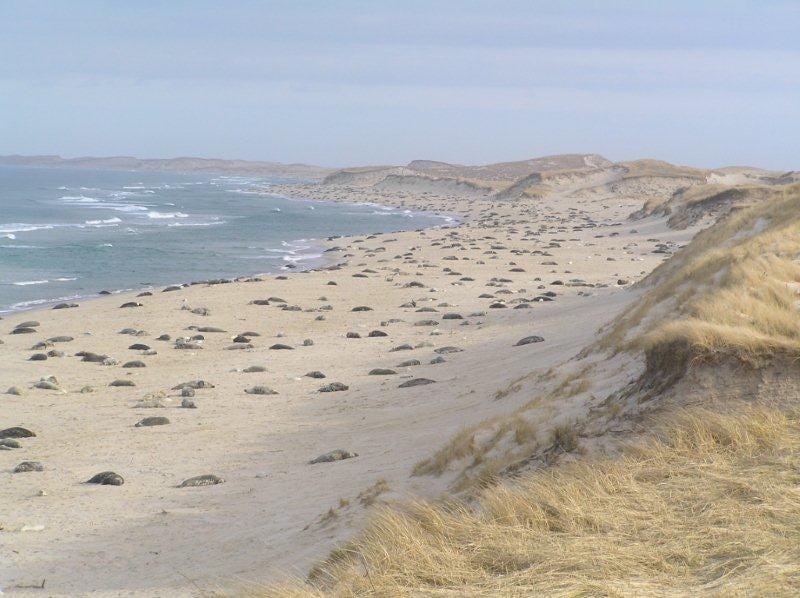
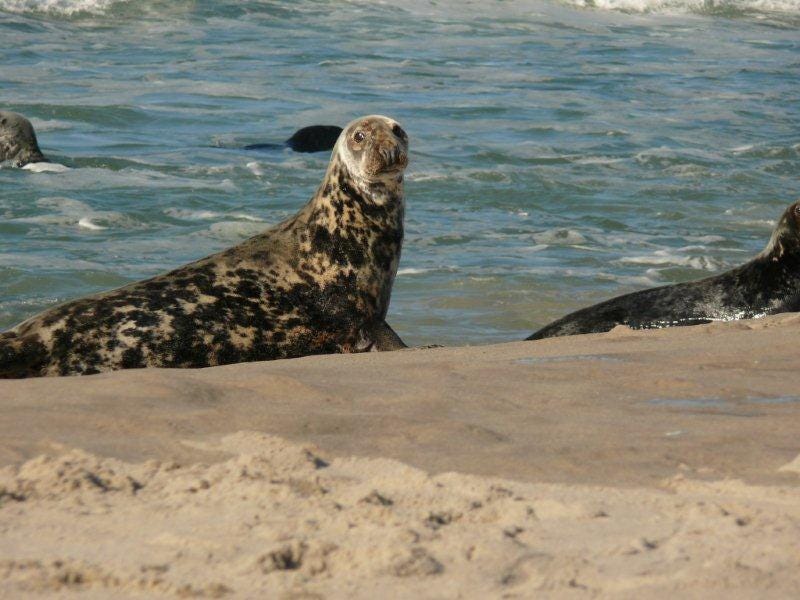
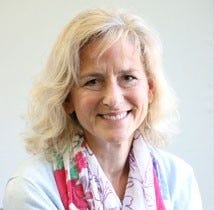
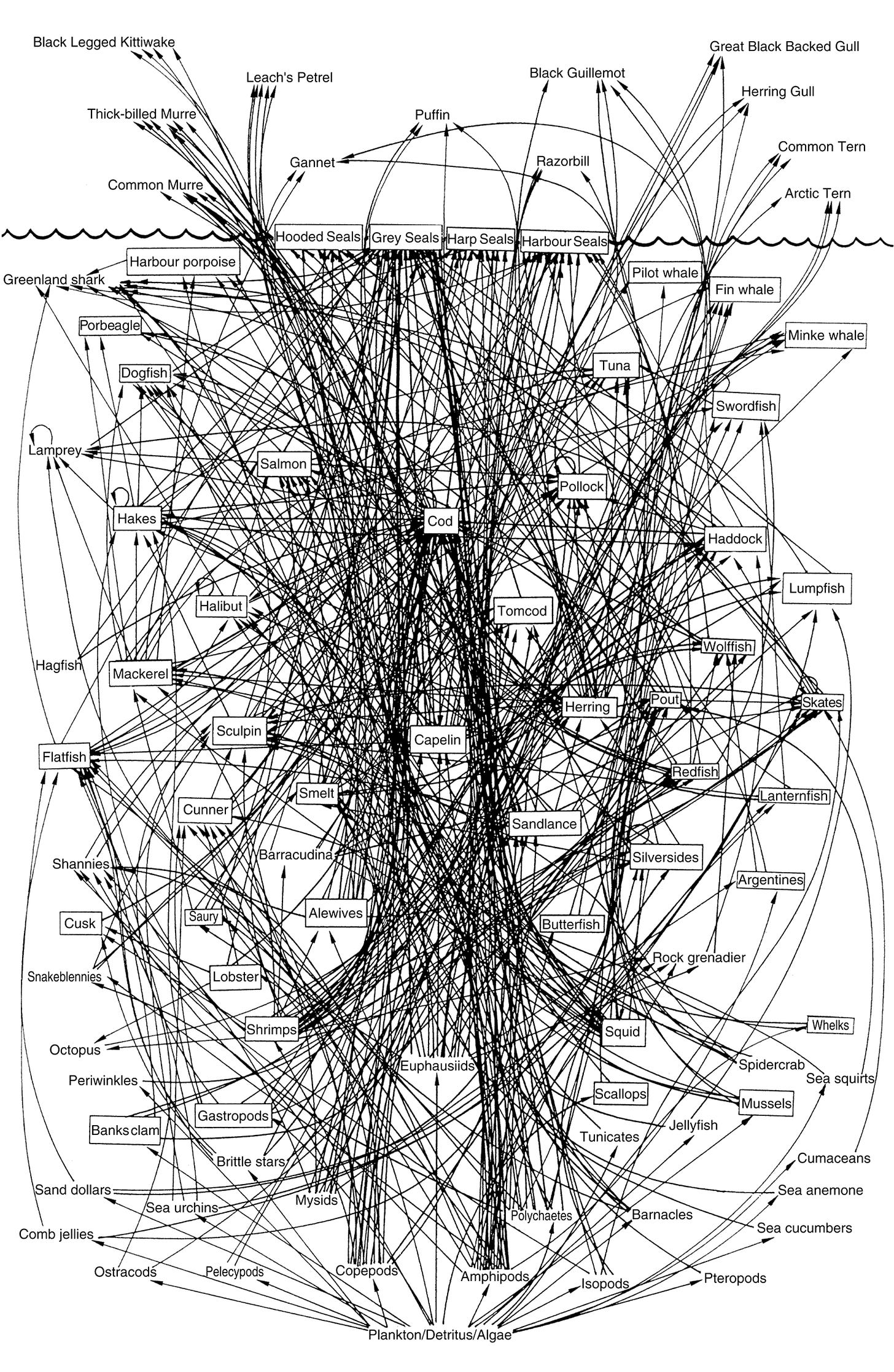
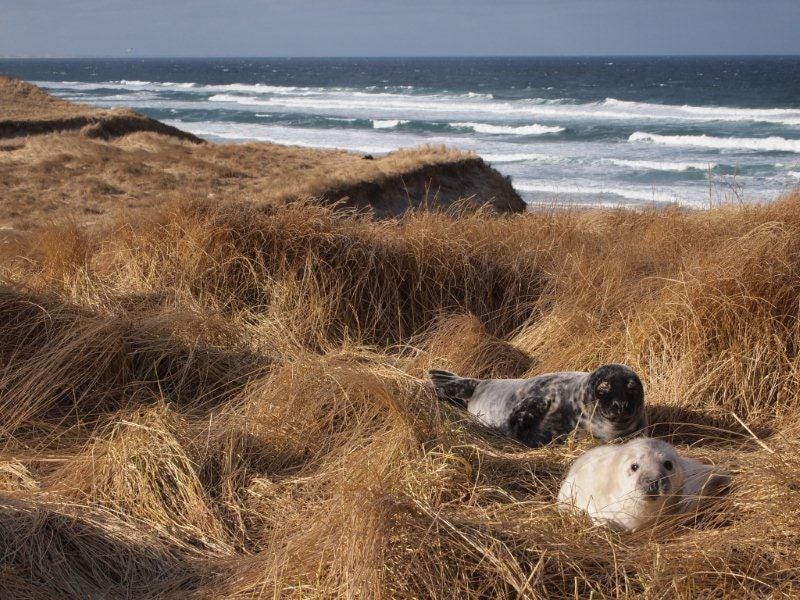
Thanks for this series, Linda. Watching the comments on the suspension of the spring mackerel and herring fishery is so frustrating, if predictable. I picked up a fishing rod for the first time since childhood in the 1st pandemic summer. I was super keen to discover the food potential of the Northumberland shore and dismayed when I realised that most of the commercially harvested finfish end up as bait. Wtf?! So yeah, seals are the problem.... Smh.
Humans forget that once upon a time these waters literally had enough fish in them to slow schooners and that was in the presence of whales, seals, walrus, dolphins.....
The description of the cull, sounds like the horros of today's Ukraine. That of the modelling, reads like the lessons we are hopefully learning from Covid. I hope this series is required reading for aspiring ecosystem ecologists - and aspiring politicians too.